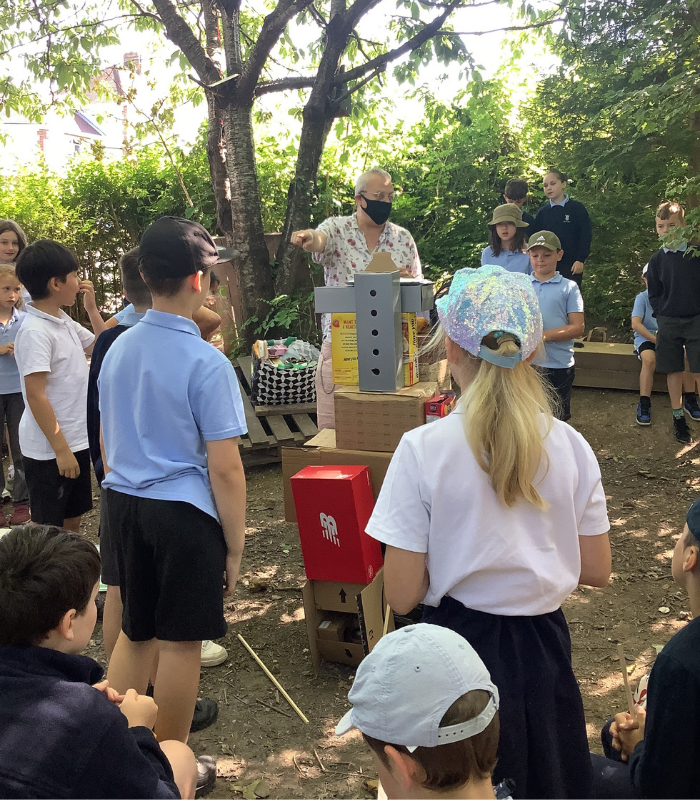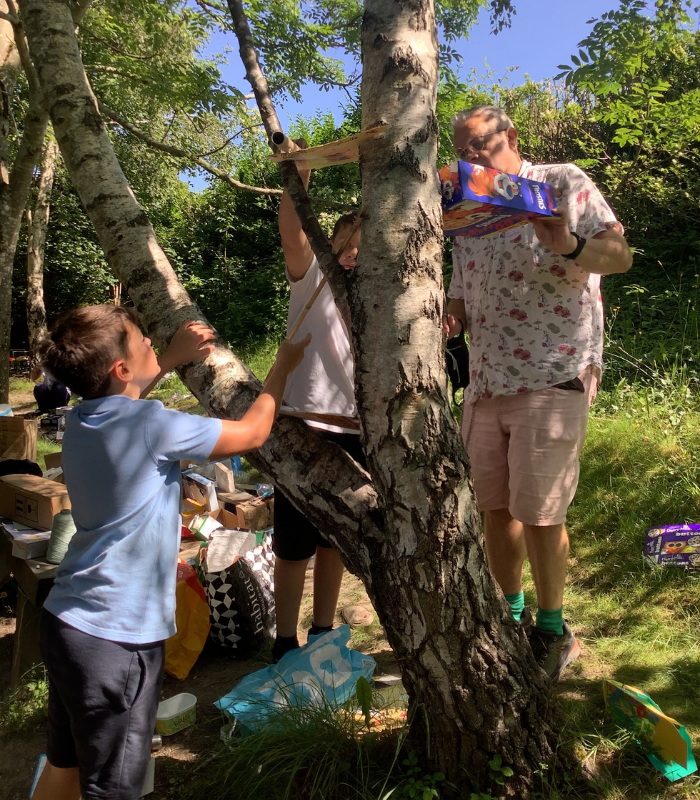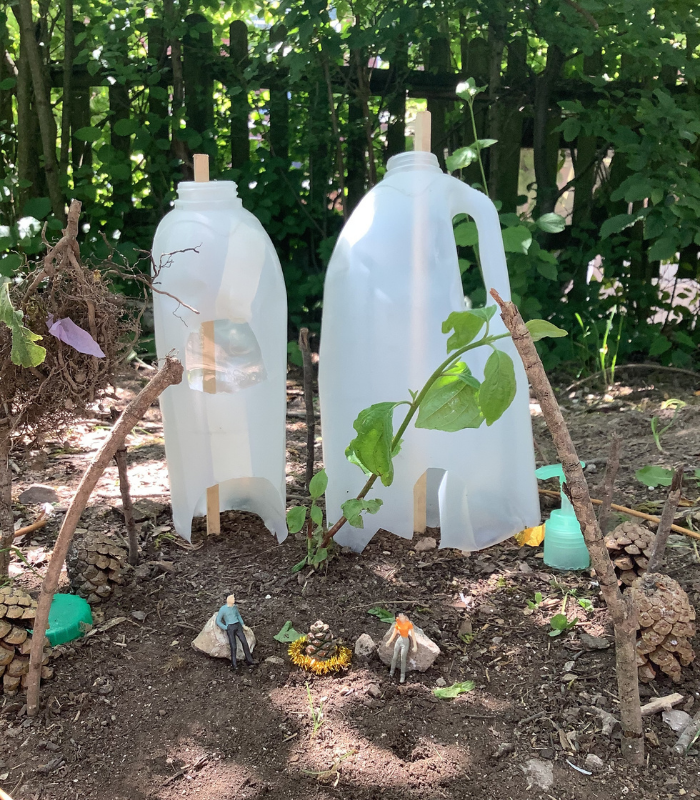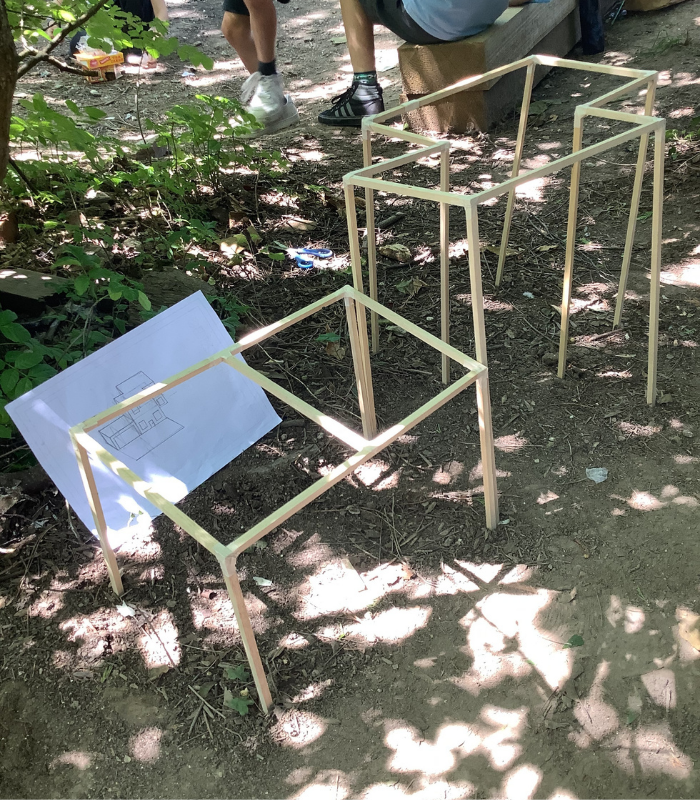Learning through doing has always been important to me. I find using my hands and mind to create something means it stays with me, meaning I can learn and recall better than any other type of learning. When I first heard about the Architecture Ambassadors scheme, I thought that a hands-on activity would be a good introduction to architecture for school children.
I had links to Patcham Junior School in Brighton through a friend, so I made contact and got placed with a teacher and a class group of 34 children aged eight and nine. The teacher and I met to plan the day and agreed on two main topics for the event; sustainability and climate change, and humans’ impact on the environment, both positive and negative. The topics are linked to the curriculum, so could help with the children’s learning, but also have obvious links to architecture and our impact on the world.
I designed a project to build a shelter for a family or group of friends and model the design in the final location. I planned a full day’s workshop, which was broken into manageable chunks and included group, solo, listening, contributing and thinking tasks. The day was roughly split into five activities; introducing myself and architecture, materials and sustainability, the project materials, sketch models and making the final model. I peppered the day with group reviews of everyone's work, sharing ideas, sharing inspiration and informal discussions about ecology, climate change, types of architectural shelter and a well-planned ‘accidental disaster!’ where the threat of flooding meant the shelters needed to be raised up in some way. We wanted to use the wildlife garden activity area near the school playground which has lots of different habitats and some trees, grass, old wooden sculptures and paths, all giving lots of potential sites with varying contexts. Following feedback from the school, I worked on resources to use on the day.
To introduce the project, I wanted to create something the children could almost believe was a true event that they had to respond to. I happened to have about forty 1:50 scale model human figures, so I invented a task around a group of mini people who were homeless and needed shelter – the group ‘One to Fifties’ were born. There had been a lot of media coverage about the plight of immigrants, particularly travelling across the channel and I wanted to show a positive response to a problem, so creating a life size model to home the 'One to Fifties' became the project. Interestingly the children never commented on why or where the ‘One to Fifties’ came from or why they needed shelter, they pragmatically got on with finding a solution which I was impressed with.
The teacher introduced the project to the children so they could collect materials and start thinking about what to do. I wanted to make a brief for them, but in an interesting and engaging way. I decided to make a mock web page that resembled the local newspaper. I wrote an article explaining the problem, mentioning that some teachers had spotted some suspicious activity in the wooded area next to the school playground and discovered the group of 'One to Fifties'. I created a campaign that requested help from the school children and they were ready for action. The introduction ‘website’ also included a sidebar with notes about references, tasks, information and ideas. I asked the children to collect recycled materials for a couple of weeks before the day to use for the models and I referenced the use of sustainable building materials on the day, so this was useful as a real life example. Finally, I created some crib sheets for the children with ideas about the models and what to collect.

The day arrived and we were lucky as the weather was fantastic, so we could carry on with our plan for working outside. I didn’t really have any expectations of the day. I’d met the teacher, seen the school and had lots of support and training from the RIBA team, so I felt prepared. I’d worked as a post-16 college lecturer for a few years, but never worked with younger children, so I felt a bit nervous but excited.
The children were totally committed to the project from the beginning, launching into all tasks and taking instruction. They were a great group with everyone making a model and completing activities. I particularly enjoyed the discussions and managed to touch on lots of topics including sustainability, climate change, material use in construction plus equality and diversity in the trade. Throughout the day we stopped to look and learn from other groups, I wanted to encourage inspiration and sharing of good ideas and techniques. A few children chose to work solo, but most were in groups and some great examples of teamwork were displayed.

The children approached the project in a number of ways, some using natural found materials and organics, some timber poles made into beams and columns, lots of string to suspend and plenty of cardboard walls. When someone added a pool with water, a few more water features went in. We had all types of design and materials used – some decorated, others more minimal; some designs were loose and relaxed and one was particularly methodical and measured. At lunch, when the children were away from the site, we hid the 1:50 models on or around the various builds; this created a great feeling of excitement that they could finally interact with some actual 'One to Fifties'. The final results showed flair and imagination and a breadth of creativity.

Overall, the day seemed to be a huge success and the children wanted to carry on working at the end of the session. Many started to bring in their parents and other children to show them the work. The teacher emailed me the next day saying: "What a fantastic day! A massive thank you to you - the children will never forget it and it truly has been the best day of our whole year."
I was so impressed with the attitude, the hard work and openness to problem solving in an architectural way. The teacher, teaching assistant and both RIBA staff who helped out made it a rewarding day and we’ve even been asked to do it again next year.










